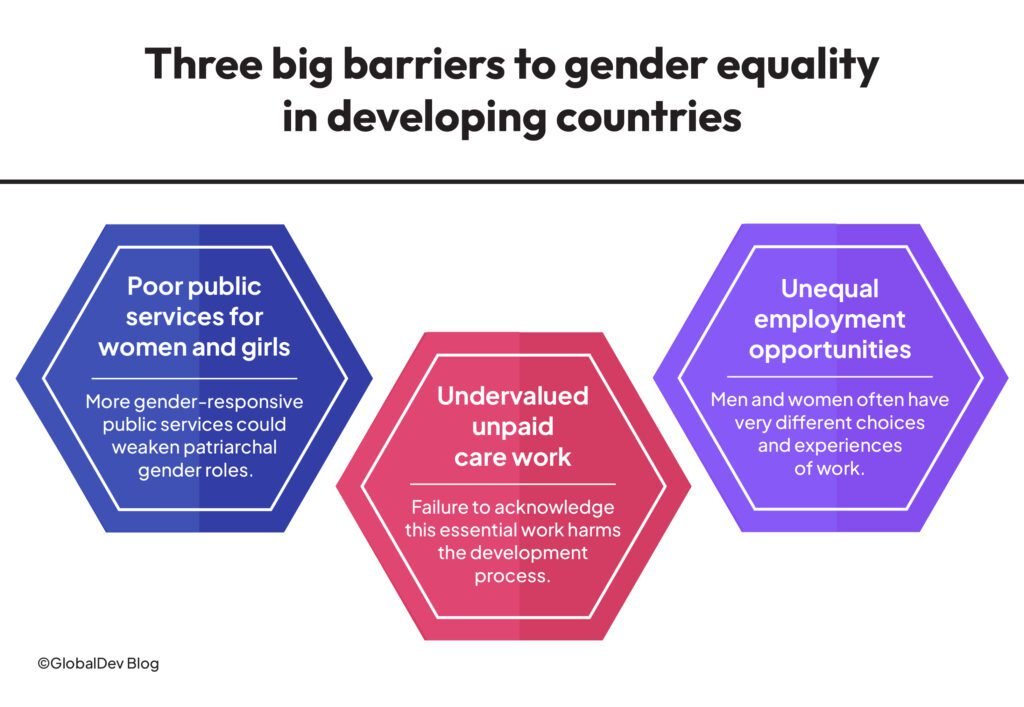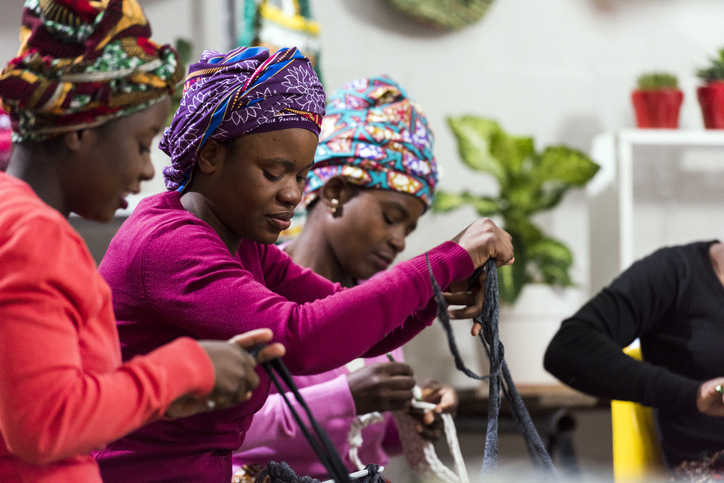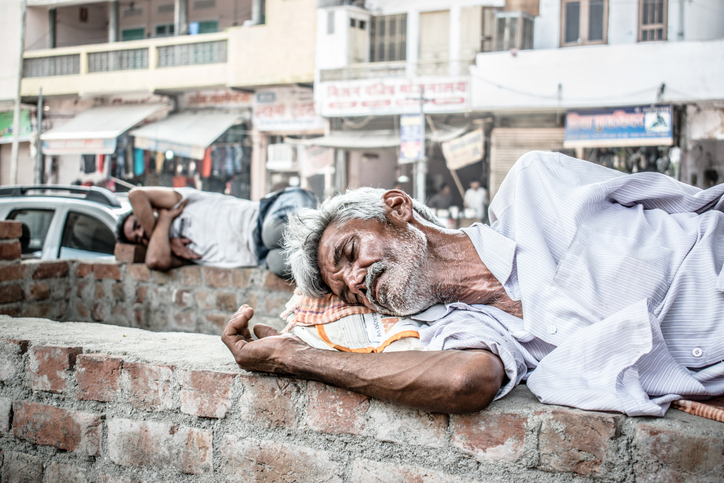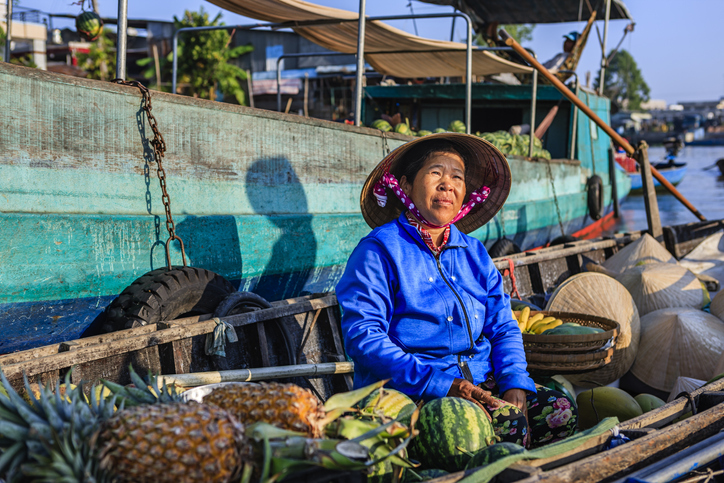What are the big hurdles to achieving gender equality in developing countries? This column, the first of a two-part series, draws lessons from the experiences of Nigeria and Vietnam, notably in terms of the lack of gender-responsive public services, the underestimation of unpaid care work done by women, and the absence of employment equality.
The latest report by UN Women suggests that achieving gender equality (Sustainable Development Goal 5) is still a long way off and may not be achieved in the next 300 years. This reality has far-reaching consequences for women globally and is especially devastating for women in the Global South, who have already faced significant barriers to full participation in the development process. In the words of Latin American scholar Anna Suzina, women may feature in developmental conversations, but they have “unequal capacity to intervene in the configuration of social order”.
There are many ways in which women in the global South are being left out of the development process. Some include being excluded from public services and economic opportunities, being marginalized in politics, and experiencing violence and exploitation.
The lack of gender-responsive public services (GRPS) and the underestimation of unpaid care work (UCW) done by women
The last decade has underscored the need for improved public services that are gender-responsive in both quantity and quality. But in developing and less developed countries, public funding for GRPS is inadequate and ineffective.
In Nigeria, the increased kidnapping of school children, forced marriage, early pregnancy, and Covid-19 have exacerbated inequalities for girls and exposed the lack of the publicly funded infrastructure needed to eliminate these inequalities. According to UNICEF, 18.5 million Nigerian children are out-of-school and 60% of them are girls. The brazen attacks by insurgents in Northern Nigeria have significantly affected children’s education. Keeping girls learning, especially in emergencies, is critical to bridge the gap.
Meanwhile, in Vietnam, the failure of GRPS has contributed to placing the unpaid care and domestic work burden on women and girls, due to their patriarchal gender roles. The social norms with regard to women’s roles in UCW is rooted deeply in Vietnamese society and passed on to the next generation.
The inadequate financial budget assigned to public services, such as early childcare, healthcare, geriatric nursing, education, housing, employment, and social security has caused women to spend much more time and effort to take care of their families, children, the sick, and the elderly. In remote and mountainous areas, ethnic minority women and girls have to walk further to collect water and fuel.

Photo 1. Vietnamese ethnic minority women and girls in mountainous areas carrying water tanks donated by a company (Source: Vietnam Youth Union)
According to the International Labour Organization (ILO), there is a lower share of men taking part in domestic work and those who do spend less time than women (as shown in Figure 1). Nearly 20% of men are not involved in these activities at all. Furthermore, development studies suggest that, “the failure to count unpaid work underpinned prevailing structures of gender inequality and contributed to the perpetuation of inadequate development strategies”.
Although often invisible, the contribution of UCW is tangible. But Vietnamese women’s contribution has not been well recognized within families and communities. The lack of acknowledgment by men about women’s contribution, together with the subjective evaluation without any specific measurement of UCW, have been deepening the patriarchal social prejudice and gender inequality. In Vietnam, UCW primarily done by women has not been counted in GDP’s formulation.
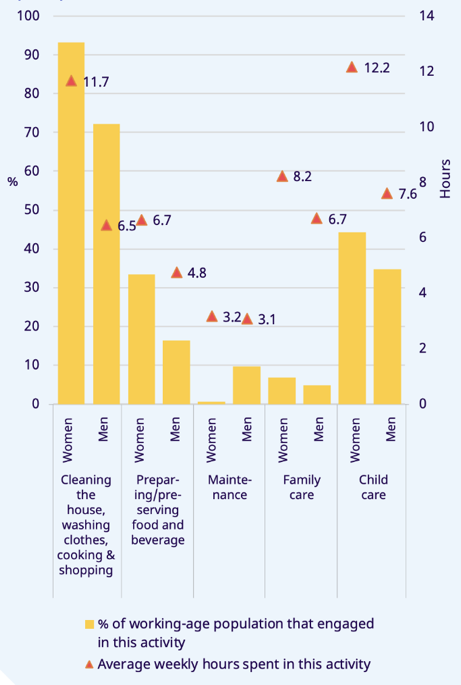
Figure 1: Share of Vietnamese men and women in UCW (2019) (Source: Viet Nam’s Labour Force Survey)
The lack of employment equality
An analysis of the role of women in economic development p p rovides an insight into the disparities affecting women’s engagement in the labor force. In Nigeria, despite having more women in the small-scale trade sector, cultural patterns oppose women’s entry into modern trade and prioritize men in employment opportunities. For example, men are four times as likely to hold executive roles, and they are also twice as likely to secure employment, according to the International Finance Corporation.
Similarly, an analysis of employment of men and women at the age of 20 shows marked differences. For example, 4% of men in rural Nigeria are married at the age of 20, in contrast with 50% of women. For women within this category, this trend further reduces their employment prospects as the cultural norm is for married women to take on more household duties, further compounding the inequalities facing girls and women.
In Vietnam, the situation seems better with the high participation of women in the labor market. Both sexes could have equal access to employment and women have comparable working hours with men. There has been progressive elimination of gender gaps in educational achievements as well.
But these indicators are not representative enough of gender-equal opportunity. Vietnamese women face multiple and persistent gender inequalities. They have to carry a disproportionate double burden: be both ‘good at national tasks and housework’.
There is also a common notion recorded in both rural and urban areas that men are breadwinners while women are only secondary earners. Moreover, Vietnamese women have lower quality employment than men. They are over-represented in vulnerable, lower-paid segments and part-time jobs, especially subsistence agriculture and domestic workers.
According to the General Statistics Office, women are twice as likely as men to become domestic workers. Besides, women workers tend to earn less and they are also less represented in decision-making positions. In 2019, while women made up nearly half of the labor force, only 24.7% took management and leadership roles, according to the ILO.
Figure 2 illustrates that while there has been an increase in the paid employment rate and a reduction in the vulnerable employment rate of both sexes over time, there has been a lack of a corresponding decrease in the gender gap.
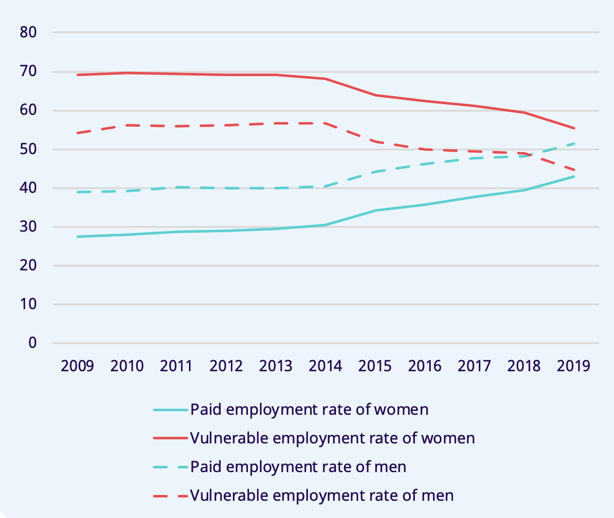
Figure 2: Prevalence of paid employment and vulnerable employment by gender in Vietnam (2010–2019)(Source: Viet Nam’s Labour Force Survey)
With such glaring disparities, what steps can be taken by stakeholders and policy-makers to work towards to the goal of gender parity? In the second and final part of this series, we examine current laws and policies in Nigeria and Vietnam that may be contributing to worsening inequality for women and girls.
